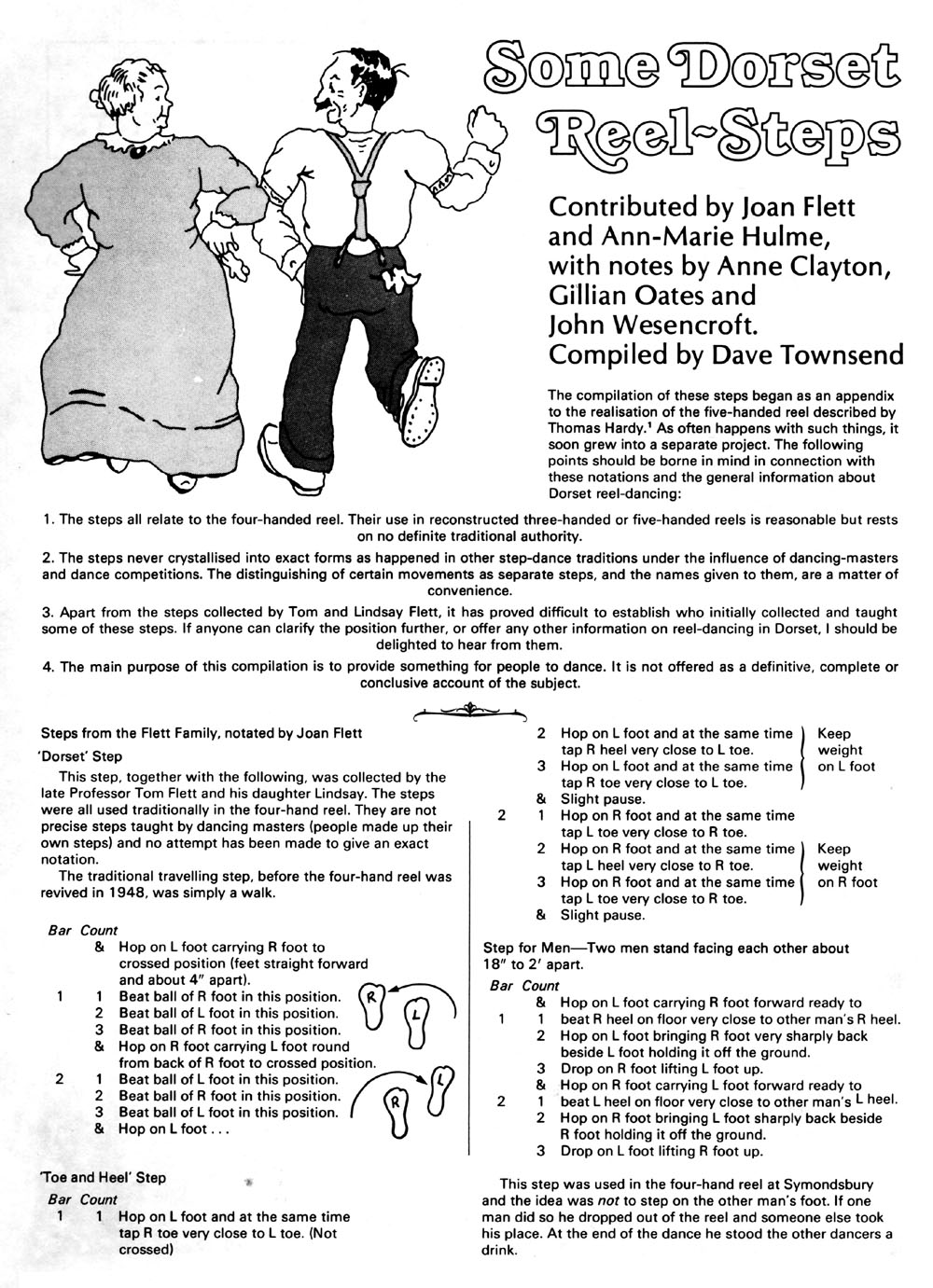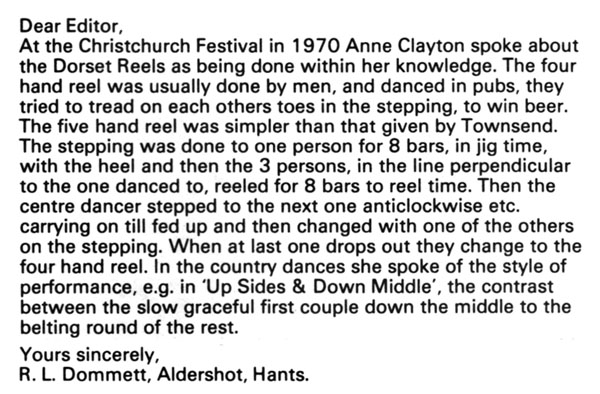Original page from English Dance & Song, Summer/Autumn 1982


Original page from English Dance & Song, Spring 1982

Back to Dance Index
| A1/A2 | Hey for Four 1 & 3/4 finishing with Men facing in the Middle, Partner behind |
| B1 | Men step to each other, turn to face Partner |
| B2 | Partners step to each other |
| Standardised Sequence: | |
| Hey - walked, no hands; Stepping starting with Men in the Middle Hey - walked, with hands; Stepping starting with Ladies in the Middle Hey - danced, no hands; Stepping starting with Men in the Middle Hey - danced, with hands; Stepping starting with Ladies in the Middle Partner Swing or Basket |



I'd love to hear from you if you know anything more about this dance, its composer, its style, or its history.
Feedback is very welcome on any aspect of these dances or Web pages.
Please contact John Sweeney with your comments.
